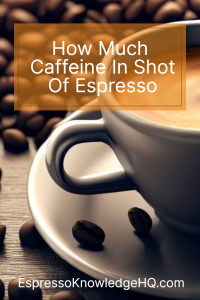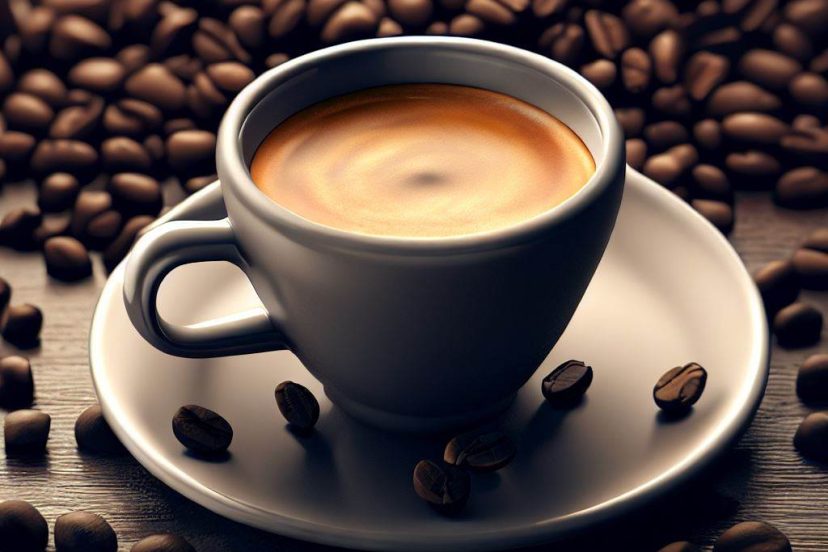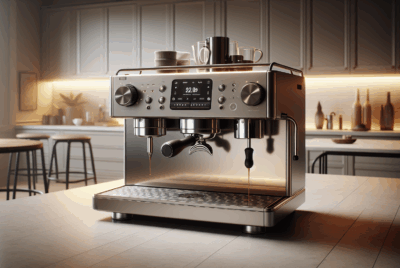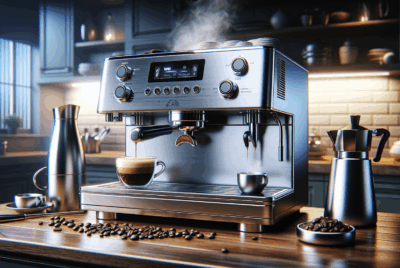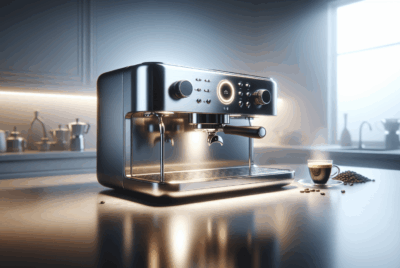Unpacking the Buzz: How Much Caffeine In A Shot Of Espresso?
As an Amazon Associate, I earn from qualifying purchases, at no additional cost to you. Disclaimer
Introduction
Hello fellow coffee lovers! Today, we’re on a mission to unravel one of the most commonly asked questions about our favorite beverage: How much caffeine in a shot of espresso? I bet the question keeps you awake as much as the caffeine itself does, doesn’t it?
What is Espresso?
As an ardent coffee enthusiast, let me share a little secret: espresso isn’t a type of coffee bean or a specific roast; it’s all about the brewing process. Now, if you’ve ever had the chance to sneak a glance at a bustling barista working behind a café counter, you might’ve seen that mystical machine spurting out a dark, potent liquid into a tiny cup.
That, my friends, is the magical world of espresso.
Espresso is a concentrated form of coffee that’s brewed by forcing a small amount of nearly boiling water under pressure through finely ground coffee beans. This method of brewing brings out the rich, deep flavors of the coffee and produces a thicker, creamier form of coffee with a layer of froth, known as ‘crema’, on top. Picture that tantalizing concoction of froth and aroma – it’s pure, liquid gold, right?
Here’s a quick tip if you’re trying to brew the perfect espresso shot at home. The key is in the grind. Espresso requires a very fine grind – not as powdery as Turkish coffee, but finer than what you’d use for a regular drip coffee maker.
Understanding Caffeine
To get to the bottom of our question, it’s important to understand what caffeine is. Caffeine is a natural stimulant found in coffee, tea, and cacao plants. It works by stimulating the brain and central nervous system, helping you stay alert and fight off tiredness.
Sources of Caffeine
While we often associate caffeine with coffee, it’s found in more than just your morning cup of Joe. Tea, energy drinks, certain medications, and even some foods contain caffeine. However, today, our focus remains on the caffeine content in espresso.
How much Caffeine in a Shot of Espresso?
We’ve been dancing around this question, haven’t we? I can see the anticipation in your eyes, much like mine when I’m waiting for my morning shot of espresso. So let’s dive in. How much caffeine actually resides in that small, yet potent shot of espresso?
Well, brace yourself for this little nugget of knowledge: a standard shot of espresso, which is approximately 1 ounce or 30 milliliters, contains roughly 63 milligrams of caffeine. Quite the punch for such a small serving, wouldn’t you agree? That’s the beauty of espresso; it’s compact, yet packed with flavor and that much-needed caffeine kick.
Now, I hear your thoughts – “Only 63 milligrams? But it feels like so much more!” That’s the uniqueness of espresso, it’s a concentrated hit of caffeine. While it’s a smaller quantity compared to a standard cup of coffee, it’s delivered all at once, instead of being sipped slowly. This can make the caffeine kick feel stronger. It’s like a jumpstart for your day, or a quick pick-me-up in the afternoon when your energy is waning.
But remember, it’s not just about counting milligrams of caffeine. It’s about enjoying each sip, each flavor note, each delightful moment that your espresso shot provides. After all, a good day is often influenced by good coffee.
Factors Influencing How Much Caffeine In A Shot Of Espresso
The world of coffee is as intricate as it is fascinating, and one of the fascinating aspects is the caffeine content. You see, the caffeine punch in your espresso shot isn’t uniform. A multitude of factors play into how much caffeine each shot delivers. Let’s pull back the curtain on some of these key influencers.
Type of Coffee Bean
Coffee, much like wine, is a complex beverage, and the type of coffee bean used can significantly impact the caffeine content in your espresso. Predominantly, there are two types of coffee beans – Arabica and Robusta. Arabica is the smoother, more subtly flavored of the two and is commonly used in espresso blends. Robusta, on the other hand, has a stronger, harsher taste with a ‘peanutty’ aftertaste, and crucially, it packs nearly twice as much caffeine as Arabica.
During one of my coffee trails, I visited a coffee plantation where they grew both types. The farmer took me through the entire process, from picking the cherries to brewing the perfect cup. The standout revelation was the stark contrast in caffeine levels between Arabica and Robusta beans. That’s when I truly appreciated the balancing act that goes into creating the perfect espresso blend.
Roasting Process
Contrary to what you might think, the roasting process actually reduces the caffeine content. The longer the beans are roasted, the more caffeine gets lost. So, that dark roast espresso you’re sipping on? It likely has less caffeine than a light or medium roast.
Brewing Method
Finally, the way your coffee is brewed has a significant effect on caffeine content. Espresso is brewed using pressure, forcing hot water quickly through the coffee grounds. This method extracts more flavors and caffeine, making espresso more concentrated than other brewing methods.
I remember experimenting with different brewing methods at home. From a French press to a Moka pot, each method gave a unique taste and caffeine kick. But nothing quite matched the potent punch of a freshly pulled espresso shot from my own espresso machine.
So the next time you’re sipping on your cherished espresso shot, remember the symphony of factors that have played a part in bringing it to your cup. The type of beans, the roast, the brewing – they all harmonize to deliver that memorable shot of coffee that sparks your senses and energizes your day.
How Much Caffeine In A Shot Of Espresso Vs Different Coffee Drinks
As we unravel the captivating world of coffee, it’s intriguing to explore how espresso stacks up against other coffee drinks when it comes to caffeine content. So, if you’re ready for some coffee comparisons, buckle up because we’re about to go on a caffeinated ride!
Espresso vs. Drip Coffee
Ah, the age-old battle – espresso versus drip coffee. While they’re both beloved members of the coffee family, their caffeine contents differ dramatically. A standard cup of drip coffee, about 8 ounces, usually contains between 95 to 200 milligrams of caffeine. On the other hand, a single shot of espresso, though much smaller in volume, boasts about 63 milligrams of caffeine.
So, despite its smaller size, does espresso fall short? Not quite! When you consider the serving size, espresso is a heavyweight champion, delivering a more concentrated caffeine punch. But if you’re savoring your coffee over a leisurely breakfast or need a larger drink to keep you going, drip coffee will provide a more sustained release of caffeine.
Espresso vs. Latte
What about our milk-laden friend, the latte? Generally, a latte is made with one or two shots of espresso, depending on the size and the barista’s style. That means, at its core, it contains the same amount of caffeine as the espresso shots used.
However, with the latte, the caffeine content is spread over a larger volume due to the addition of steamed milk, which dilutes the caffeine concentration. It’s a more mellow experience, both in terms of taste and caffeine hit. So, if you’re someone who enjoys a gentler, creamier coffee experience, the latte might be your perfect match.
The Effects of Caffeine on the Body
Now that we have an understanding of caffeine content, let’s look at what that caffeine does to you.
Benefits of Caffeine
Caffeine, when consumed in moderation, can have several benefits. It can boost physical performance, burn fat, and drastically improve mental health by reducing the risk of depression and boosting brain function.
Drawbacks and Cautions of Caffeine Consumption
However, too much caffeine can lead to restlessness, increased heart rate, insomnia, and dependency. It’s always a good idea to monitor your caffeine consumption and keep it within recommended levels.
Conclusion
Now, next time someone quizzes you on the caffeine content of an espresso shot, you won’t just have the answer, but you’ll also be able to dazzle them with all the factors that can influence it! So, keep enjoying your shots of espresso, but remember, moderation is key.
Frequently Asked Questions (FAQs)
1. Does espresso have more caffeine than coffee?
Per volume, yes. Espresso has more caffeine than regular coffee. However, since espresso servings are typically much smaller, a regular coffee may have more total caffeine.
2. Does the type of coffee bean affect caffeine content?
Yes, Robusta beans contain almost twice as much caffeine as Arabica beans.
3. How does the roasting process affect caffeine content?
Darker roasts often have less caffeine than lighter roasts as the roasting process reduces caffeine content.
4. How does brewing method influence caffeine content?
The high-pressure brewing method used for making espresso extracts more caffeine, making it more concentrated than other types of coffee.
5. What are the benefits and drawbacks of caffeine?
While caffeine can boost physical performance and improve mental health, excessive consumption can lead to restlessness, insomnia, and dependency.
